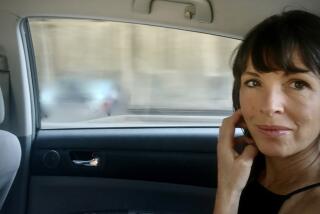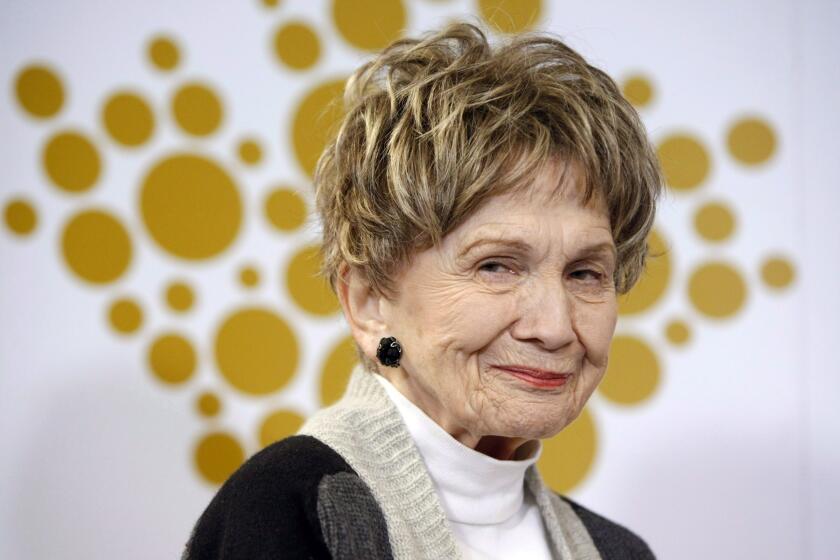Kate Atkinson’s ‘Life After Life’ is a clever creation
There’s a bit of Edward Gorey-esque glee in the way Kate Atkinson keeps knocking off her main character in “Life After Life.”
And yet, she manages to invest these repeated deaths with poetry and emotion.
This ingenious narrative conceit — the decision to kill her protagonist and bring her back, again and again — not only illustrates how seemingly small decisions can affect our lives; it also allows us as readers to inhabit a novelist’s creative process. This is what writers do: create characters, hit a dead end, then go back and start again.
In “Life After Life,” Ursula Todd is born on a snowy night in 1910 and dies before taking a breath: “No wind in the strangled pipe. The buzzing of a thousand bees in the tiny curled pearl of an ear.” Turn the page and there she is, again being born in 1910 — but this time, despite the winter storm, a doctor is there to help and Ursula survives.
Ursula’s regeneration may also have historical implications. Early in the book she’s in a German cafe. It’s 1930 and she shoots a man she calls “Führer.” Does she, could she, prevent World War II? How is that possible, if at age 4 she slides off a roof to her death?
And we’re back again at that wintry birth.
Atkinson is a writer who likes to play with plot and structure; her first novel, the Whitbread Prize-winning “Behind the Scenes at the Museum” (1995), relies on flashback to break open its chronology; her third, “Emotionally Weird” (2000) begins as what appears to be a mystery, only to turn when we discover that what seemed to be the opening chapter is really part of a story written by the book’s protagonist.
Here, she presses the repetition until it’s almost too much, then shifts perspective — to mother Sylvie, or Bridget the maid — to deepen the narrative. As one story ends and another begins, we see that Ursula’s existence is cyclical, swinging in different directions to encompass new (and sometimes unwelcome) possibilities.
The daughter of an opinionated mother and a banker father, Ursula grows up on a British country estate with the familiar trappings: enviable accommodations, beautiful scenery, a few servants. She is the third of five children, and her family relations are at the center of her world. Her love for her elder sister Pamela and younger brother Teddy is constant. So too is the vividly evoked house, Fox Corner, a rural idyll.
And yet, as she comes of age in tandem with the 20th century, Ursula is presented with the new but limited choices open to women of her age.
“‘What am I to do then?’ Ursula said helplessly (hopelessly). Bridget appeared with a tray of tea and cake and placed it on the table between them. ‘Learn shorthand and typing and work in the civil service? That sounds pretty dismal too. I mean what else is a woman to do if she doesn’t want to go from the parental to the marital home with nothing in between?’”
For Ursula, in this instance, anyway, the solution is to spend a year traveling in Europe. Although that would seem to put her close to the fate we saw in the early pages, the timing is off: She departs in 1933, her opportunity to face down the Führer in that cafe already lost.
Ursula, of course, knows nothing of her life’s diverging versions. Rather, it is we, the readers, who sense the pressure of repetition, the life lived many times. Indeed, apart from occasionally feeling an inexplicable dread, Ursula herself is almost completely unaware of the many iterations her existence takes.
Early on, she has flashes of déjà vu and visits a psychiatrist. Luckily, he is avuncular and thoughtful, introducing her to Buddhism and the idea of eternal return, philosophies that inform the structure of Atkinson’s narrative. More practically, he provides Ursula with a way to compartmentalize her sense of repetition and go about her life (lives?) unburdened by it.
Atkinson uses all of this to focus on a universal question: What choices set us on our individual paths in life? Because we see Ursula grow into one kind of woman and then another, we have a strangely robust sense of her decisions. At one point I guarantee you’ll find yourself thinking, “Wait — don’t marry that guy!”
Unfortunately, eternal return does not mean things will get better for her. Some of the most affecting sections of the book come when she is troubled: in an unhappy marriage or in London for the Blitz.
During one long section, she volunteers on a crew that does mop-up work after German bombing runs; the city has been devastated. Although we’ve seen her try to stop World War II, it happens anyway (more than once). She’s not learning any specific lessons; she just has to start over every time.
Still, even as she begins afresh, the accretion of her many lives takes on its own weight. That’s because with “Life After Life,” Atkinson has crafted a narrative that pushes us to think about our own choices — less the things we might put on a résumé than how we respond to a surprise kiss on our birthday.
Ursula is one woman, rendered in multiple iterations, which makes this a story about the creation of self. That’s no small feat, although if there is a flaw in this fantastic novel, it’s that some of Ursula’s narratives are so compelling, so convincing, that it is hard to imagine her ending up any other way.
But there she is again, starting over, becoming someone new. Her changeable character is proper or reticent or flirtatious or brave, the expression of a woman who gets to try and try again until she gets it right.
Along the way, there is a delight in the essence of this unusual fiction. When many people are dying, it’s safe to assume that Ursula is not immune. The first time she dies of the Spanish flu it’s terribly sad, but after a few more passes you may be wondering when she will ever get around to surviving. It’s that Gorey-esque glee, coming back around again.
Life After Life
A Novel
Kate Atkinson
A Reagan Arthur Book/Little, Brown and Co.: 544 pp., $27.99
More to Read
Sign up for our Book Club newsletter
Get the latest news, events and more from the Los Angeles Times Book Club, and help us get L.A. reading and talking.
You may occasionally receive promotional content from the Los Angeles Times.









